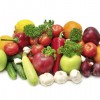 Growers of the food supply have adopted the use of integrated pest management (IPM) because it is no longer possible to rely solely on chemical pesticides to prevent unacceptable crop losses. According to the U.S. Environmental Protection Agency (EPA), IPM is the coordinated use of pest and environmental information and available pest control methods to prevent unacceptable levels of damage by the most economical means with the least possible hazard to people, property, and the environment. Scientific IPM strategies give the grower economic incentives for sustaining long-term crop protection with minimal disruption to the environment. The agricultural community typically will use pesticides sparingly as part of the IPM strategy whenever proven alternatives are not available for pest control. This 4-page fact sheet was written by Frederick M. Fishel, and published by the UF Department of Agronomy, March 2013.
Growers of the food supply have adopted the use of integrated pest management (IPM) because it is no longer possible to rely solely on chemical pesticides to prevent unacceptable crop losses. According to the U.S. Environmental Protection Agency (EPA), IPM is the coordinated use of pest and environmental information and available pest control methods to prevent unacceptable levels of damage by the most economical means with the least possible hazard to people, property, and the environment. Scientific IPM strategies give the grower economic incentives for sustaining long-term crop protection with minimal disruption to the environment. The agricultural community typically will use pesticides sparingly as part of the IPM strategy whenever proven alternatives are not available for pest control. This 4-page fact sheet was written by Frederick M. Fishel, and published by the UF Department of Agronomy, March 2013.
http://edis.ifas.ufl.edu/pi230
Category: Families & Consumers
Women and Money: Unique Issues: Money and the Family (FCS7250/FY1354)
 Ask any parent and he or she will tell you — it costs money to raise children. Taking into account inflation, a middle-income family may spend more than $295,000 to raise a child born in 2011 to the age of 17. This is not a small amount of money, so you will need to know the types of expenses required to raise your family. This 5-page fact sheet reviews the costs associated with raising children and gives you tips on how to teach your children about finances. By knowing the costs of raising your family and setting up a budget, you can teach your children money management skills that will help them throughout their lives. Written by Lynda Spence, Martie Gillen, and Diann Douglas, and published by the UF Department of Family Youth and Community Sciences, March 2013.
Ask any parent and he or she will tell you — it costs money to raise children. Taking into account inflation, a middle-income family may spend more than $295,000 to raise a child born in 2011 to the age of 17. This is not a small amount of money, so you will need to know the types of expenses required to raise your family. This 5-page fact sheet reviews the costs associated with raising children and gives you tips on how to teach your children about finances. By knowing the costs of raising your family and setting up a budget, you can teach your children money management skills that will help them throughout their lives. Written by Lynda Spence, Martie Gillen, and Diann Douglas, and published by the UF Department of Family Youth and Community Sciences, March 2013.
http://edis.ifas.ufl.edu/fy1354
A Guide to Healthy Snacking for the Frail Older Adult (FSHN1219/FS214)
 Frail older adults face unique challenges that may lead to discouragement, decreased food consumption, and irregular eating patterns, which can further lead to various nutrient deficiencies. Simple, nutritious snacks that are easy to eat are a great way to add nutritious foods to their diet. This 3-page fact sheet provides several easy snack ideas. Written by Paula G. Harris-Swiatko and Wendy J. Dahl, and published by the UF Department of Food Science and Human Nutrition, March 2013.
Frail older adults face unique challenges that may lead to discouragement, decreased food consumption, and irregular eating patterns, which can further lead to various nutrient deficiencies. Simple, nutritious snacks that are easy to eat are a great way to add nutritious foods to their diet. This 3-page fact sheet provides several easy snack ideas. Written by Paula G. Harris-Swiatko and Wendy J. Dahl, and published by the UF Department of Food Science and Human Nutrition, March 2013.
http://edis.ifas.ufl.edu/fs214
EPA’s Endocrine Disruptor Screening Program (EDSP) (PI227)
 People have asked questions in recent years concerning the effects that certain chemicals may have on the endocrine system of humans and wildlife. Laboratory studies have produced evidence that show various chemicals disrupt the endocrine systems of animals. Other evidence has shown that the endocrine systems of certain fish and wildlife species have been affected by chemical contaminants. Do some of these same chemical contaminants also affect the human endocrine system? Do pesticides cause these effects? The relationship between human diseases of the endocrine system and exposure to environmental contaminants is poorly understood and controversial. This 2-page fact sheet discusses the U.S. Environmental Protection Agency’s (EPA) screening program for potential effects to the endocrine system caused by pesticide exposure. Written by F.M. Fishel, and published by the UF Department of Agronomy, March 2013.
People have asked questions in recent years concerning the effects that certain chemicals may have on the endocrine system of humans and wildlife. Laboratory studies have produced evidence that show various chemicals disrupt the endocrine systems of animals. Other evidence has shown that the endocrine systems of certain fish and wildlife species have been affected by chemical contaminants. Do some of these same chemical contaminants also affect the human endocrine system? Do pesticides cause these effects? The relationship between human diseases of the endocrine system and exposure to environmental contaminants is poorly understood and controversial. This 2-page fact sheet discusses the U.S. Environmental Protection Agency’s (EPA) screening program for potential effects to the endocrine system caused by pesticide exposure. Written by F.M. Fishel, and published by the UF Department of Agronomy, March 2013.
http://edis.ifas.ufl.edu/pi227
Children and Pesticides (PI226)
 Children act fast, but so do poisons, including pesticides. Fortunately for most parents, their children are not harmed when the parents have a momentary lapse and aren’t supervising them for a short time. But how would parents respond if they suddenly turn around, and their toddler is holding a can of household aerosol insect killer? This 3-page fact sheet outlines some facts and precautionary measures regarding children and pesticides in the home environment, so parents have a better idea of how to keep harmful chemical products away from their children. Written by F.M. Fishel, and published by the UF Department of Agronomy, March 2013.
Children act fast, but so do poisons, including pesticides. Fortunately for most parents, their children are not harmed when the parents have a momentary lapse and aren’t supervising them for a short time. But how would parents respond if they suddenly turn around, and their toddler is holding a can of household aerosol insect killer? This 3-page fact sheet outlines some facts and precautionary measures regarding children and pesticides in the home environment, so parents have a better idea of how to keep harmful chemical products away from their children. Written by F.M. Fishel, and published by the UF Department of Agronomy, March 2013.
http://edis.ifas.ufl.edu/pi226
Pureed Foods, Thickened Beverages, and Water Needs (FSHN1301/FS218)
 Thickened liquids are often recommended for individuals who have problems swallowing thin liquids. Juice, milk, water, and even coffee can be thickened. Pre-thickened beverages are available commercially, or they can be prepared with various commercial thickeners. This 4-page fact sheet describes various consistencies of thickness, how much water various puréed foods contribute. Written by Wendy J. Dahl, and published by the UF Department of Food Science and Human Nutrition, March 2013.
Thickened liquids are often recommended for individuals who have problems swallowing thin liquids. Juice, milk, water, and even coffee can be thickened. Pre-thickened beverages are available commercially, or they can be prepared with various commercial thickeners. This 4-page fact sheet describes various consistencies of thickness, how much water various puréed foods contribute. Written by Wendy J. Dahl, and published by the UF Department of Food Science and Human Nutrition, March 2013.
http://edis.ifas.ufl.edu/fs218
Unplanned Pregnancy's Effects on Mothers and Children (FAR5124/FM1050)
 “Nearly half of all pregnancies in the US today are unplanned. Though this surprise can be a wonderful one, it can also be a difficult adjustment. Indeed, some studies connect unplanned pregnancies with higher levels of stress and depression in mothers in the early months. But could the aftereffects of an unintended pregnancy linger even longer? …”
“Nearly half of all pregnancies in the US today are unplanned. Though this surprise can be a wonderful one, it can also be a difficult adjustment. Indeed, some studies connect unplanned pregnancies with higher levels of stress and depression in mothers in the early months. But could the aftereffects of an unintended pregnancy linger even longer? …”
This 2-page Family Album Radio transcript was written by Carol Church, and published by the UF Department of Family Youth and Community Sciences, February 2013.
http://edis.ifas.ufl.edu/fm1050
Aging in Place Is a New Life Stage (FAR6061/FM1049)
 “Many families today face tough decisions about how to assist elderly relatives when they need some extra help with daily living. Unsurprisingly, many such adults want to remain in their own homes where they feel most comfortable…” This 2-page Family Album Radio transcript was written by Carol Church, and published by the UF Department of Family Youth and Community Sciences, February 2013.
“Many families today face tough decisions about how to assist elderly relatives when they need some extra help with daily living. Unsurprisingly, many such adults want to remain in their own homes where they feel most comfortable…” This 2-page Family Album Radio transcript was written by Carol Church, and published by the UF Department of Family Youth and Community Sciences, February 2013.
http://edis.ifas.ufl.edu/fm1049
Quality Childcare Now, More Involvement with School and Teachers Later (FAR0616/FM0148)
 “Most employed parents of young children would agree that it can sometimes be difficult to put their sons and daughters in the care of others during the workday. Feeling confident about the quality of these daycare arrangements can make all the difference to parents’ peace of mind…”This 2-page Family Album Radio transcript was written by Carol Church, and published by the UF Department of Family Youth and Community Sciences, February 2013.
“Most employed parents of young children would agree that it can sometimes be difficult to put their sons and daughters in the care of others during the workday. Feeling confident about the quality of these daycare arrangements can make all the difference to parents’ peace of mind…”This 2-page Family Album Radio transcript was written by Carol Church, and published by the UF Department of Family Youth and Community Sciences, February 2013.
http://edis.ifas.ufl.edu/fm1048
Homeless Children Need Preschool (FAR0615/FM1047)
 “During the recent recession, news reports included some sobering video footage from an area surrounding what’s sometimes called the happiest place on earth, Disney World. Unfortunately, climbing unemployment and home foreclosures in the region had left many middle- and working-class families suddenly homeless. Their new, temporary dwelling places were hotel rooms, the couches of friends and family members, homeless shelters, or the family car…” This 2-page Family Album Radio transcript was written by Suzanna Smith, and published by the UF Department of Family Youth and Community Sciences, February 2013.
“During the recent recession, news reports included some sobering video footage from an area surrounding what’s sometimes called the happiest place on earth, Disney World. Unfortunately, climbing unemployment and home foreclosures in the region had left many middle- and working-class families suddenly homeless. Their new, temporary dwelling places were hotel rooms, the couches of friends and family members, homeless shelters, or the family car…” This 2-page Family Album Radio transcript was written by Suzanna Smith, and published by the UF Department of Family Youth and Community Sciences, February 2013.
http://edis.ifas.ufl.edu/fm1047
Foster Parenting (FAR0008/FM065)
 “Eddie Murphy, Duane Culpepper, Superman, Marilyn Monroe, Alonzo Mourning, Cher, Ice T, John Lennon, James Dean, and Babe Ruth: What do all these people have in common? They were foster kids! Foster parenting is a job that gets little attention and is in great demand. It involves taking a child into your home: a child who has been abused, neglected, or abandoned, or whose primary caregivers are unable to meet their parenting duties—and caring for them as if they are one of your own…” This 2-page Family Album Radio transcript was written by Amanda Quaas and Suzanna Smith, and published by the UF Department of Family Youth and Community Sciences, February 2013.
“Eddie Murphy, Duane Culpepper, Superman, Marilyn Monroe, Alonzo Mourning, Cher, Ice T, John Lennon, James Dean, and Babe Ruth: What do all these people have in common? They were foster kids! Foster parenting is a job that gets little attention and is in great demand. It involves taking a child into your home: a child who has been abused, neglected, or abandoned, or whose primary caregivers are unable to meet their parenting duties—and caring for them as if they are one of your own…” This 2-page Family Album Radio transcript was written by Amanda Quaas and Suzanna Smith, and published by the UF Department of Family Youth and Community Sciences, February 2013.
http://edis.ifas.ufl.edu/fm065
Dealing with Picky Eaters (FAR8003/FM017)
 “There were motivations to eat that many baby boomers heard as they were growing up. Families across America were learning how to eat by the rules. But, according to current research, those rules may have done more harm than good…” This 2-page Family Album Radio transcript was written by Donna Davis, and published by the UF Department of Family Youth and Community Sciences, February 2013.
“There were motivations to eat that many baby boomers heard as they were growing up. Families across America were learning how to eat by the rules. But, according to current research, those rules may have done more harm than good…” This 2-page Family Album Radio transcript was written by Donna Davis, and published by the UF Department of Family Youth and Community Sciences, February 2013.
http://edis.ifas.ufl.edu/fm017
Why Fragile Families Don’t Marry (FAR3003/FM013)
 “He can’t support us. Why should I marry him?” This mom is not alone in her resistance to matrimony. In fact, increasing evidence has many of the opponents of the Healthy Marriage Initiative on the offensive. While the reauthorization of the welfare reform bill will allocate substantial funds to states for the development of programs for improving relations between unmarried parents, those who challenge the bill argue that marriage is not the answer… This 2-page Family Album Radio transcript was written by Donna Davis, and published by the UF Department of Family Youth and Community Sciences, February 2013.
“He can’t support us. Why should I marry him?” This mom is not alone in her resistance to matrimony. In fact, increasing evidence has many of the opponents of the Healthy Marriage Initiative on the offensive. While the reauthorization of the welfare reform bill will allocate substantial funds to states for the development of programs for improving relations between unmarried parents, those who challenge the bill argue that marriage is not the answer… This 2-page Family Album Radio transcript was written by Donna Davis, and published by the UF Department of Family Youth and Community Sciences, February 2013.
http://edis.ifas.ufl.edu/fm013
The Benefits of Breastfeeding (FAR8001/FM011)
 Medical research has found many compelling advantages to breastfeeding, not only for infants, but for mothers as well. According to the American Academy of Pediatrics, the advantages include nutritional, immunologic, developmental, psychological, social, economic, and environmental benefits. This 2-page Family Album Radio transcript was written by Donna Davis, and published by the UF Department of Family Youth and Community Sciences, February 2013.
Medical research has found many compelling advantages to breastfeeding, not only for infants, but for mothers as well. According to the American Academy of Pediatrics, the advantages include nutritional, immunologic, developmental, psychological, social, economic, and environmental benefits. This 2-page Family Album Radio transcript was written by Donna Davis, and published by the UF Department of Family Youth and Community Sciences, February 2013.
http://edis.ifas.ufl.edu/fm011
Parent Time (FAR0401/FM008)
 Parenting an infant is one of the most exciting and fulfilling opportunities of a lifetime. At the same time, it can be one of the most stressful periods in a person’s life. Research has shown that babies as young as one month old can sense and will be affected by a parent who is depressed or angry. Finding the delicate balance between the new parents’ needs and the baby’s needs is very important. This 2-page Family Album Radio transcript was written by Donna Davis, and published by the UF Department of Family Youth and Community Sciences, February 2013.
Parenting an infant is one of the most exciting and fulfilling opportunities of a lifetime. At the same time, it can be one of the most stressful periods in a person’s life. Research has shown that babies as young as one month old can sense and will be affected by a parent who is depressed or angry. Finding the delicate balance between the new parents’ needs and the baby’s needs is very important. This 2-page Family Album Radio transcript was written by Donna Davis, and published by the UF Department of Family Youth and Community Sciences, February 2013.
http://edis.ifas.ufl.edu/fm008
Shopping for Health: Fruit (FSHN1220/FS215)
 Fruits taste good, and they are good for you. Some fruits are very nutrient dense. This means they contain lots of the vitamins, minerals, antioxidants, and fiber that your body needs to stay healthy. Whether you like fresh fruit or fruit juice, frozen fruit or fruit from a can, it’s important to choose a variety of different fruits every day. Here are some tips to help you before, during, and after your fruit shopping trip. This 3-page fact sheet was written by Ashley R. Kendall and Wendy J. Dahl, and published by the UF Department of Food Science and Human Nutrition, March 2013.
Fruits taste good, and they are good for you. Some fruits are very nutrient dense. This means they contain lots of the vitamins, minerals, antioxidants, and fiber that your body needs to stay healthy. Whether you like fresh fruit or fruit juice, frozen fruit or fruit from a can, it’s important to choose a variety of different fruits every day. Here are some tips to help you before, during, and after your fruit shopping trip. This 3-page fact sheet was written by Ashley R. Kendall and Wendy J. Dahl, and published by the UF Department of Food Science and Human Nutrition, March 2013.
http://edis.ifas.ufl.edu/fs215
Women and Money: Unique Issues: Money Issues across the Life Cycle (FCS7248/FY1352)
 Most families depend on a woman’s income to help support the household. Some women are co-breadwinners while others are the only source of income. Throughout a woman’s life, she will experience many money issues unique to women. A woman may experience the following situations: lower earnings, a longer life expectancy, lack of retirement planning, divorce, and fewer years in the workplace because of childrearing or caring for older parents. Many of these issues can work against a woman’s ability to accumulate money and attain stable financial status. This 3-page fact sheet was written by Diann Douglas, Martie Gillen, and Lynda Spence, and published by the UF Department of Family Youth and Community Sciences, March 2013.
Most families depend on a woman’s income to help support the household. Some women are co-breadwinners while others are the only source of income. Throughout a woman’s life, she will experience many money issues unique to women. A woman may experience the following situations: lower earnings, a longer life expectancy, lack of retirement planning, divorce, and fewer years in the workplace because of childrearing or caring for older parents. Many of these issues can work against a woman’s ability to accumulate money and attain stable financial status. This 3-page fact sheet was written by Diann Douglas, Martie Gillen, and Lynda Spence, and published by the UF Department of Family Youth and Community Sciences, March 2013.
http://edis.ifas.ufl.edu/fy1352
Retirement Need Analysis: How Much of My Current Income Will I Need for Retirement? (FCS7251/FY1355)
 The amount of money needed for retirement varies from person to person. There may not be an exact amount, but there are ways to estimate the amount you will need. While no “magic number” exists for the amount you should save for retirement, there are calculations you can use to estimate the amount you will need. Calculating your wage replacement ratio (WRR) using either the top-down or bottom-up approach can help you determine how much money you should put aside for retirement and provide you with savings goals. This 3-page fact sheet was written by Jorge Ruiz-Menjivar and Martie Gillen, and published by the UF Department of Family Youth and Community Sciences, March 2013.
The amount of money needed for retirement varies from person to person. There may not be an exact amount, but there are ways to estimate the amount you will need. While no “magic number” exists for the amount you should save for retirement, there are calculations you can use to estimate the amount you will need. Calculating your wage replacement ratio (WRR) using either the top-down or bottom-up approach can help you determine how much money you should put aside for retirement and provide you with savings goals. This 3-page fact sheet was written by Jorge Ruiz-Menjivar and Martie Gillen, and published by the UF Department of Family Youth and Community Sciences, March 2013.
http://edis.ifas.ufl.edu/fy1355
Mutual Funds (FCS5266/FY1351)
 Mutual funds are open-end investment companies that use a pool of many investors’ money to buy shares of different investments. They can be an effective way for the average investor to build a diverse portfolio. Although these funds come with fees, taxes, and, in the case of load funds, commissions, an investor still has the potential to achieve positive returns and beat inflation. This 4-page fact sheet was written by Lisa Leslie and Michael S. Gutter, and published by the UF Department of Family Youth and Community Sciences, February 2013.
Mutual funds are open-end investment companies that use a pool of many investors’ money to buy shares of different investments. They can be an effective way for the average investor to build a diverse portfolio. Although these funds come with fees, taxes, and, in the case of load funds, commissions, an investor still has the potential to achieve positive returns and beat inflation. This 4-page fact sheet was written by Lisa Leslie and Michael S. Gutter, and published by the UF Department of Family Youth and Community Sciences, February 2013.
http://edis.ifas.ufl.edu/fy1351
MyPlate Foods to Increase: Fruits and Vegetables (FCS80022/FY1348)
 Fruits and vegetables should be a main component of every meal. They are low in calories and provide a number of vitamins that you need in your diet. By making half of your plate fruits and vegetables at every meal, you will reduce your risk for chronic diseases and may even protect yourself against certain types of cancer. This 4-page fact sheet provides information on fruits and vegetables and includes tips on how to add more of them to your diet. Written by Jonathan Holzinger, Karla Shelnutt, and Gail Kauwell, and published by the UF Department of Family Youth and Community Sciences, February 2013.
Fruits and vegetables should be a main component of every meal. They are low in calories and provide a number of vitamins that you need in your diet. By making half of your plate fruits and vegetables at every meal, you will reduce your risk for chronic diseases and may even protect yourself against certain types of cancer. This 4-page fact sheet provides information on fruits and vegetables and includes tips on how to add more of them to your diet. Written by Jonathan Holzinger, Karla Shelnutt, and Gail Kauwell, and published by the UF Department of Family Youth and Community Sciences, February 2013.
http://edis.ifas.ufl.edu/fy1348